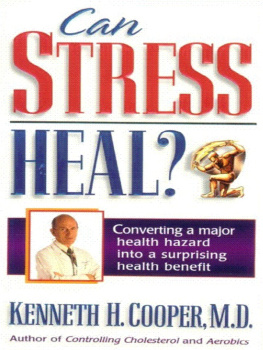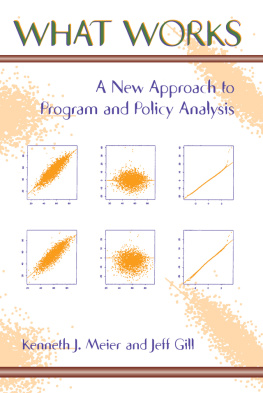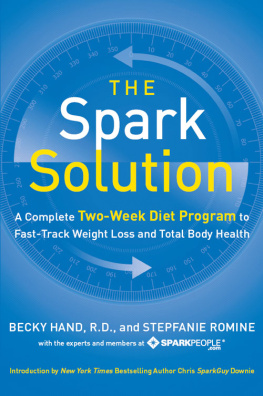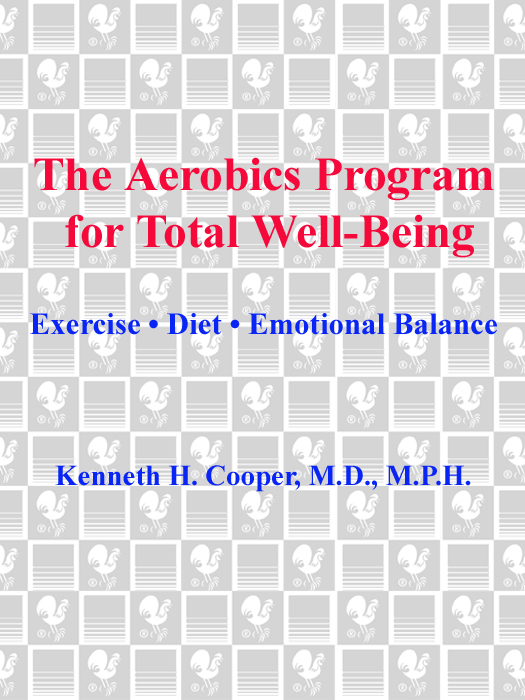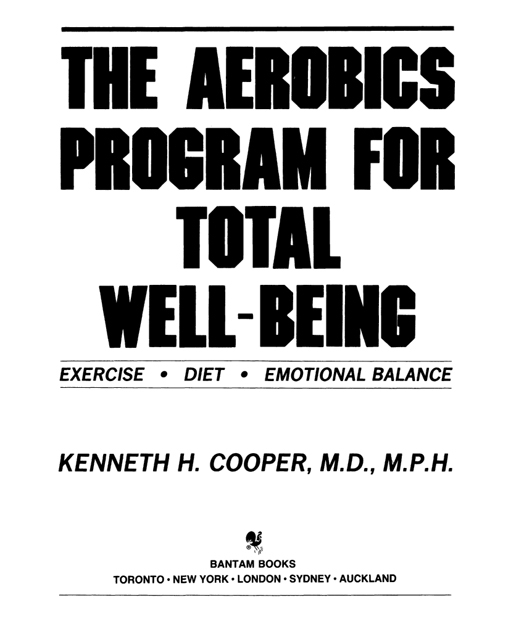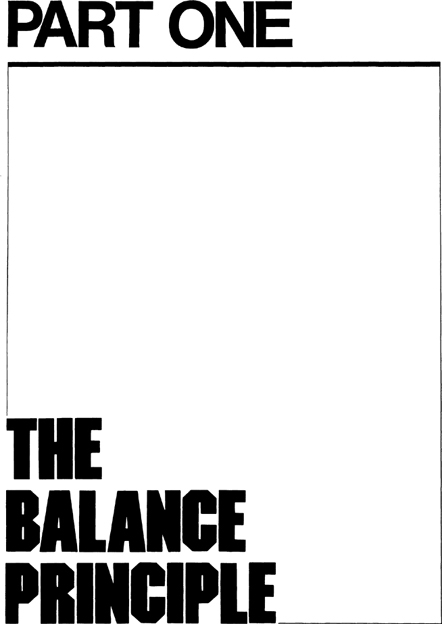THE AEROBICS PROGRAM FOR TOTAL WELL-BEING
A Bantam Book / published by arrangement with M. Evans & Co., Inc.
PRINTING HISTORY
M. Evans edition published November 1982
A Selection of The Literary Guild of America
Super Foods for Super Health from serialized in Runners World, January and February 1983; Four Steps to Starting an Exercise Program appeared in Vogue,
October 1982.
The Calorie Equivalents for Popular Foods and Beverages list in the contains material from Food Values of Portions Commonly Used, Thirteenth Edition, revised by Jean A. T. Pennington, and Helen Nichols Church. Copyright 1980 by Helen Nichols Church, B.S., and Jean A. T. Pennington, Ph.D., R.D. Reprinted by permission of Harper & Row, Publishers, Inc.
The Fat-Cholesterol Chart in the is reprinted with permission from the American Heart Association Cookbook, New Expanded Edition. Copyright 1975 American Heart Association, Inc. Published by David McKay Company, Inc.
The list of Sports Medicine Clinics in the is reprinted with permission from Running & Fitness, a publication of the American Running & Fitness Association. Copyright 1982 American Running & Fitness Association.
Bantam edition / September 1983
All rights reserved.
Copyright 1982 by Kenneth H. Cooper
Illustrations 1982 by M. Evans and Company, Inc.
This book may not be reproduced in whole or in part, by mimeograph or any other means, without permission.
For information address: M. Evans and Company, Inc.
216 East 49th Street, New York, N.Y. 10017.
Library of Congress Cataloging in Publication Data
Cooper, Kenneth H.
The aerobics program for total well-being.
Bibliography:
1. Aerobic exercises. 2. Physical fitness.
I. Title.
RA781.15.C6571982 613.71 82-16361
ISBN 0-553-34677-6
eBook ISBN: 978-0-307-77725-6
Bantam Books are published by Bantam Books, a division of Bantam Doubleday Dell Publishing Group, Inc. Its trademark, consisting of the words Bantam Books and the portrayal of a rooster, is Registered in U.S. Patent and Trademark Office and in other countries. Marca Registrada. Bantam Books, 1540 Broadway, New York, New York 10036.
v3.1
CONTENTS
PREFACE
As readers of previous aerobics books know, the major emphasis always has been one of increasing physical activity. Yet, as we have become more knowledgeable in this field, it is obvious that total well-being is dependent upon much more than just regular exercise. At one time, I felt that a good program could compensate for poor health habits and was guilty of saying that exercise can overcome many if not all of the deleterious effects of diet. If a person was smoking and carrying a few extra pounds, I was not overly concerned, as long as he or she exercised regularlyand I still am convinced that exercise helps normalize bad health habits. Yet, it was brought to my attention in far too many cases, that overweight people and those who smoke developed severe progressive arteriosclerosis and heart disease, even though they were running regularly. In these cases, exercise probably delayed the disease process and may have helped in prolonging their lives, but it was not totally protective. To my knowledge, there is still nothing known to man that is completely protective against coronary heart diseasemedicine, surgery, or even marathon running.
Another principle emphasized throughout this book is one of moderation. The old concept that if something is good, more of it is better is seriously questioned whether it be fastidious dieting or ultramara-thoning. The statement if you are running more than 3 miles, 5 times per week, you are running for something other than fitness will surprise many previous readers of the aerobics books. Yet, during the past 10 years, it has been possible to identify thresholds of physical activity beyond which there is a beneficial change in the cardiovascular system as well as the level of activity at which there are detrimental effects. I predict that the scientific data used to document these thresholds will be too impressive to be ignored.
We have only scratched the surface in the fields of health maintenance and preventive medicine, and as more embrace these concepts, both the quality and quantity of life will substantially improve. It has been said that when a person dies, he dies not so much of the particular disease as of his entire life. With proper motivation, education, and implementation, that can be changed. However, all that I can do in this book is help in the education and motivation; you the reader must be responsible for the implementation.
To complete this plan for total well-being, I would be grossly negligent if I did not emphasize the most important component, that is spiritual well-being. For bodily exercise profiteth little: but godliness is profitable unto all things, having promise of the life that now is, and of that which is to come [1 Timothy 4:8 Authorized (King James) Version].
Even though there is no way I can guarantee that anyone who follows the principles outlined in this book will live one day longer, I can assure them that the lives that they will live will be happier, healthier, and more productive. If those goals are achieved, my purpose in writing The Aerobics Program for Total Well-Being will have been accomplished.
Kenneth H. Cooper, M.D.
D ALLAS , T EXAS
What Is Total Well-Being?
O ne of the great principles of the universe is the principle of balance. If the earth were a few miles closer to the sun, it would be an inferno. If it were a few miles farther away, it would be a desolate, frigid desert. But in its present location, balanced at an ideal distance from the sun, our planet is in a perfect position to sustain an exciting proliferation of life forms.
The atoms that are the basic building blocks of all matter on earth are another example of this perfect balance. The nucleus of the atom is made up of neutrons and protons, an incredibly harmonious organization. Yet, it is through the splitting of one of these atoms that the cataclysmic eruptions of nuclear power take place. To function properly, every part of our world, no matter how miniscule, must be in a state of complete equilibrium.
And so it is with our bodies.
The human body is just another part of the universe that is meant to be in perfect balance. We have been constructed in such a way that we need just so much exercise, no more and no less. We need just so much food of certain types. And we need just the right amount of sleep and relief from the tensions and stresses of daily life.
If a person goes too far in either directiontoo little or too much exercise, food, or restthen his or her entire physical and psychological system gets out of kilter. And where there is a lack of balance, there is also a lack of personal well-being.
By the same token, on the positive side, where there is balance, there is a sense of well-being. And where there is perfect balance, there is what I call


